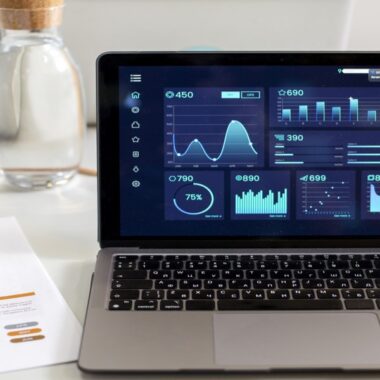Summary: Explore 10 common mistakes data analysts make, including data quality and communication issues. Learn how to avoid these pitfalls to enhance the accuracy and effectiveness of your analyses.
Introduction
A data analyst deals with a vast amount of information daily. Continuously working with data can sometimes lead to a mistake. Errors are common, but they can be avoided. In this article, we will be exploring 10 such common errors that every data analyst makes. Knowing them and adopting the right way to overcome these will help you become a proficient data analyst.
Who is a Data Analyst?
A Data Analyst plays a crucial role in helping organisations make data-driven decisions. They gather, process, and analyse data to provide actionable insights to drive business strategy and improve performance.
Key Responsibilities:
- Data Collection: Data Analysts collect data from various sources, including databases, spreadsheets, and external systems.
- Data Cleaning: They clean and preprocess data to ensure accuracy and consistency. This involves removing duplicates, handling missing values, and correcting errors.
- Data Analysis: Using statistical methods and data visualisation tools, Data Analysts interpret complex data sets to identify trends, patterns, and correlations.
- Reporting: They create detailed reports and dashboards that present their findings clearly and clearly to stakeholders.
- Decision Support: Data Analysts provide recommendations based on their analysis to support business decisions and strategic planning.
Skills and Tools:
- Technical Skills: Proficiency in SQL, Excel, and data visualisation tools like Tableau or Power BI is essential.
- Analytical Skills: Strong problem-solving abilities and a solid understanding of statistical techniques are crucial.
- Communication Skills: Data Analysts must effectively communicate their findings to technical and non-technical audiences.
In summary, a Data Analyst transforms raw data into meaningful insights to help organisations make informed decisions. By leveraging their data processing, analysis, and visualisation expertise, they play a vital role in driving business success.
Must See: Quantitative Analyst vs Data Scientist.
10 Mistakes That a Data Analyst May Make
Despite the importance of their role, data analysts often make mistakes that can compromise their analyses and lead to flawed insights. Understanding and avoiding these common pitfalls is essential for delivering accurate, actionable results. This guide explores ten key mistakes data analysts may make and offers insights into how to prevent them.
Failing to Define the Problem
Defining the problem is the first and most crucial step in data analysis. Without a clear understanding of the problem, data analysts may waste time on irrelevant data and choose inappropriate tools.
This oversight can lead to misaligned analyses that fail to address the business issue. Articulating the problem helps select the right dataset and analytical methods, ensuring the analysis is focused and relevant.
Overlooking Data Quality
The quality of data directly impacts the accuracy of the analysis. Poor data quality—characterised by inaccuracies, inconsistencies, or incomplete records—can lead to flawed results. Data analysts must prioritise data quality by performing thorough data validation checks.
This involves examining the data for errors, inconsistencies, and missing values before analysing it. Ensuring high data quality helps achieve reliable and trustworthy outcomes.
Ignoring Data Cleaning
Data cleaning is vital to correcting errors and removing duplicate records. Neglecting this process can result in misleading analyses and erroneous conclusions.
Data cleansing ensures the dataset is accurate and reliable, providing a solid foundation for analysis. Analysts should systematically review and clean their data to avoid the risks associated with unprocessed or corrupted datasets.
Using Inappropriate Analysis Methods
Choosing the proper analysis methods is essential for deriving meaningful insights. Data analysts should be well-versed in various analytical techniques and select the most appropriate one based on the data and the problem.
Using an incorrect method can lead to inaccurate results and misinterpretations. Understanding different analysis methods and their applications helps produce valid and actionable insights.
Not Validating Results
Validating analysis results is crucial to ensure their accuracy and reliability. Analysts must verify their findings through various validation techniques, such as cross-checking with other data sources or using statistical tests.
Failure to validate results can lead to incorrect conclusions and poor decision-making. Rigorous validation processes help confirm the analysis’s robustness and ensure the results’ reliability.
Failing to Communicate Results Effectively
Effective communication of results is as important as the analysis itself. Data analysts must present their findings clearly and understandably, often using visual aids like charts and graphs. Failing to communicate results effectively can render valuable insights meaningless.
Analysts should focus on presenting their findings in a way that is accessible and understandable to stakeholders, enhancing the impact of their work.
Not Considering the Business Context
Understanding the business context is crucial for relevant data analysis. Analysts must align their analysis with the organisation’s goals and objectives to ensure it addresses the right issues.
Ignoring the business context can lead to analyses that are disconnected from the organisation’s needs. A firm grasp of the business environment helps produce actionable insights aligned with strategic goals.
Not Documenting Your Analysis
Proper documentation ensures that others can understand, replicate, and build upon the analysis. Without adequate documentation, the analysis process can become opaque, and others may struggle to follow the methodology or validate the results. Detailed documentation provides transparency and facilitates collaboration, making it easier for others to use and verify the analysis.
Overlooking Ethical Considerations
Data analysts often handle sensitive information that requires careful handling. Overlooking ethical considerations, such as data privacy and security, can have serious repercussions. Analysts must adhere to ethical guidelines and best practices to protect sensitive data and ensure compliance with legal and organisational standards. Ethical practices help maintain trust and safeguard both individuals and organisations.
Overlooking Data Privacy and Security
Data privacy and security are paramount for effective data analysis. Analysts must ensure that data is protected from unauthorised access and breaches. Implementing proper security measures can lead to significant risks, including financial losses and reputational damage. Analysts should follow relevant privacy and security guidelines to secure the data and maintain its integrity.
Also, Learn: How to Become a Data Analyst with No Experience
How could a data analyst correct the unfair practices?
A thorough understanding of industry best practices can help data analysts make informed decisions. Here are some critical practices that data analysts should follow to improve their work:
Use Collaborative Tools and Techniques
A data analyst needs to use different tools to derive useful insights. Using collaborative tools and techniques such as version control and code review, a data analyst can ensure that the project is completed effectively and without flaws.
Stay Up-to-Date with the Latest Techniques and Tools
It is equally significant for data analysts to focus on using the latest tools and technology. Since the data science is evolving, new trends are being added to the system. As a data analyst, you must stay abreast of all these developments.
It includes attending conferences, participating in online forums, workshops, quizzes, and regularly reading industry-relevant publications.
Perform Exploratory Data Analysis (EDA)
Exploratory data analysis (EDA) is critical in any data science project. It involves visualising and exploring the data to understand its characteristics better and identify any patterns or trends relevant to the problem being solved.
Frequently Asked Questions
What are common mistakes made by data analysts?
Data analysts often make mistakes such as failing to define the problem, overlooking data quality, and using inappropriate analysis methods. These errors can lead to inaccurate insights and poor decision-making.
How can data analysts improve their practices?
Data analysts can improve by clearly defining problems, validating results, and staying updated with the latest tools and techniques. Proper documentation and ethical data handling are also crucial for accurate and reliable analyses.
Why is data cleaning important for data analysis?
Data cleaning ensures accuracy and reliability by removing duplicates and correcting errors. Without it, analyses can be misleading, impacting the quality of insights and decision-making.
Conclusion
Data Analysis involves a detailed examination of data to extract valuable insights, which requires precision and practice. By avoiding common Data Analyst mistakes and adopting best practices, data analysts can improve the accuracy and usefulness of their insights. If you want to learn more about our course, get details from our data analytics courses.






